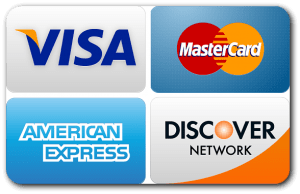5 Credit Card Payoff Tactics That Will Save You Money, written by Aliyyah Camp
Credit cards are a standard form of spending in society. Although credit cards are convenient and useful, they also come with a downside – they make it far too easy to rack up debt. As of May 2016, about 38% of American households carry some form of credit card debt. On top of that, the average balance-carrying household has over $16,000 in credit card debt. If you’re ready to get out of credit card debt, here are five payoff tactics that’ll save you money:
Tactic #1: Ask For a Lump-sum Settlement
If you’re expecting to receive a large amount of money in the near future, such as a tax refund, you can try to ask your credit card issuer for a lump-sum settlement. A lump-sum settlement is a payment for an entire balance as opposed to installments. This is beneficial to you because you can get a discount on the balance if you offer to pay it all at once. Credit card issuers benefit as well because they now have a guaranteed balance paid rather than small payments that could stop at any time.
For example, let’s say you have a credit card that has a limit of $4,000. You’ve maxed out the card; and over the years it’s accrued interest and late payment fees. Now you owe a total of $5,500. You may be able to negotiate with the credit card issuer to go back to the original balance of $4,000 if you can pay it now. Even if the credit card issuer can only give you a discount of 10%, for instance, that’s still $550 saved by doing a lump-sum settlement.
Tactic #2: Ask For a Reduction in Interest
If you know you can only afford to make a small payment to your credit card balance each month, asking for a reduction in interest is a good idea. This way, more of your payments will go towards your initial balance as opposed to accrued interest. Resultantly, you’ll be able to pay your credit card off more quickly.
To ask for a reduction in interest on your credit card, first do your homework and see what other credit card issuers are offering. Then, make the call to the customer service line. Here’s a script you can use when making the call:
“I’ve been a cardholder at [credit card issuer] since [year]. I’m calling to ask for an interest rate reduction on my credit card. As a loyal cardholder, I continue to make on-time payments and spend [X dollars] per year on this card. I recently saw a credit card offer from [competing credit card issuer]. The card is similar to mine, but comes with a [X%] interest rate. I’d like to keep my business with you given our history. Would you be able to match this interest rate?”
Tactic #3: Balance Transfer
Requests for interest rate reductions on credit cards may not always be successful. Perhaps you haven’t been a cardholder for long enough or your payment history isn’t exactly impressive. If this is the case, a balance transfer could be a good option for you. A balance transfer is when part or all of a debt is moved to another credit account in order to save money on interest.
You’ll have to do your research to find the best balance transfer credit card because they’re not all created equal. You may want to look for one that offers the longest introductory period for the 0% interest rate. But beware of balance transfer fees and annual fees.
Tactic #4: Debt Avalanche
The debt avalanche method is a tried and true way to pay down your debt while saving money in the process. It works especially well for paying off multiple credit cards if your goal is to save money on interest. Here’s how you do it:
List your credit cards from highest interest rate to lowest interest rate.
Pay as much as you can towards the balance on the one with the highest interest rate.
Pay only the minimum balance on the rest of the cards.
Once the first credit card is fully paid off, repeat the process with the card with the next highest interest rate.
This payoff method saves you money because you pay the least amount of interest.
Tactic #5: Debt Snowball
The debt snowball method is another tried and true way to pay down your debt. Unlike the debt avalanche method, the debt snowball method focuses on momentum rather than strictly interest rates. Here’s how it works:
List your credit cards from lowest balance to largest balance.
Pay as much as you can towards the credit card with the lowest balance.
Pay only the minimum balance on the rest of the cards.
Once the first credit card is fully paid off, repeat the process with the card with the next lowest balance.
This payoff method will ultimately cost you a little more than the debt avalanche method. However, if you have a hard time getting motivated to payoff your credit cards, the debt snowball method may be what you need to keep you focused. You’ll experience those small accomplishments as each balance is paid off.
Final Thoughts
These five credit card payoff tactics are proven ways to help you save money while you pay off your credit card debt. Once you get out of credit card debt, it’s important to evaluate your financial situation and habits to make sure you don’t fall back into it. For example, did you get into credit card debt because you lacked an emergency fund? Now might be the time to focus on building one. Getting and staying out of credit card debt may be difficult, but it’s a great goal to work towards. The financial rewards and peace of mind that come with being debt-free are worth it.
Repair your credit today, go to PDQ Credit!


